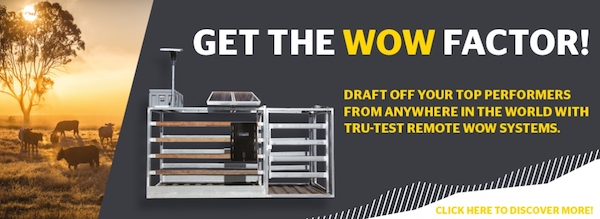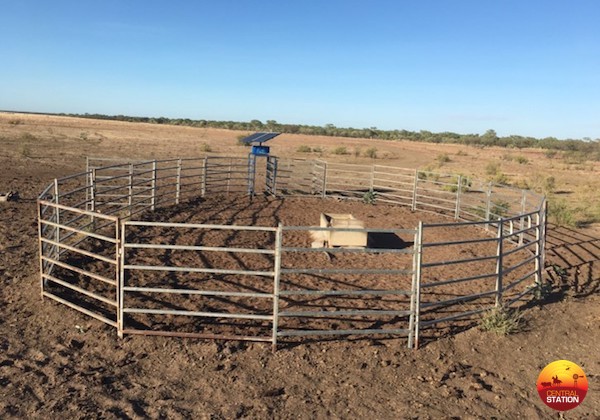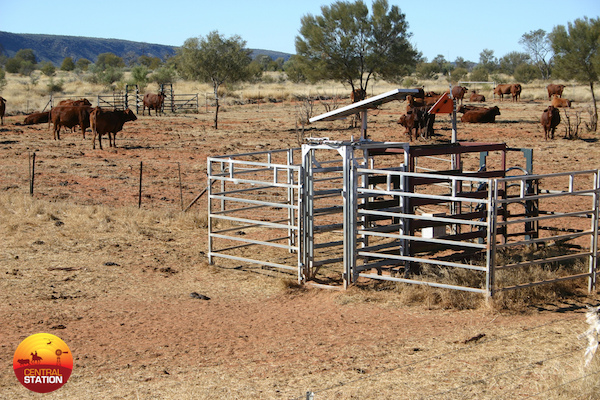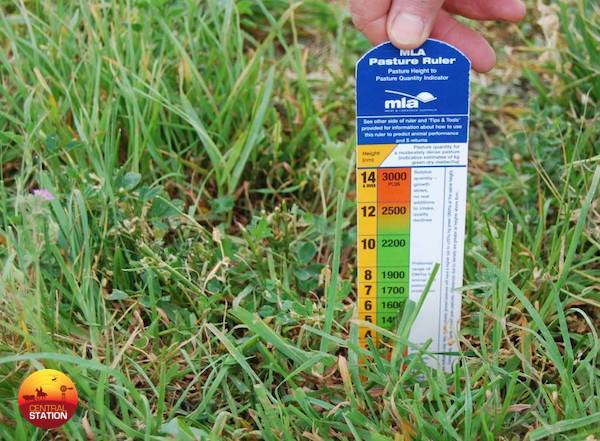Beefbots
Host: Kadiaitcha Pastoral Company
Written by James Christian – Owner, Kadiatcha Pastoral Company.
I moved back to the Territory in 2012 to work for Precision Pastoral, a company now partnered with Tru-Test, that makes remote livestock walk-over weighing systems (Remote WOW), which are solar-powered, NLIS tag-recognising, bathroom scales for cattle, to which draft gates or backline sprayers can be attached. Quite frankly, though, the attachments are only limited by imagination.
 Remote WOW (photo credit: Tru-Test).
Remote WOW (photo credit: Tru-Test).
The idea behind the Remote WOW is to make a database of the herd’s performance over time. If the unit is installed at a water point in central country, or at a lick tub in top end country, the cattle will be induced to walk across the scales by the treat in the system (the lick or water). As they walk in for their daily drink or lick, their tag will be scanned and their weight will be recorded, and the data transmitted to the database for subsequent storage and analysis. This database can be useful in a number of scenarios, which are outlined below.
 Remote WOW at a water yard (photo credit: Precision Pastoral).
Remote WOW at a water yard (photo credit: Precision Pastoral).

As the data are collected, both the individual animal weights and the herd weights can be graphed. The slope of the graph indicates the growth performance over time: upwards indicates weight gain, flat indicates maintaining weight, downwards indicates weight loss. Average daily growth (ADG) rates can be calculated and compared, and the results of the calculations then allow the producer to make some objective management decisions: keep the stock where they are because they’re growing nicely, shift them to another paddock, book trucks, or any other alternative, based on actual weights rather than subjective guesswork.
An algorithm within the Precision Pastoral system detects when cows have calved, and can establish with high accuracy the birth weight of the calf. In environments where artificial insemination is practiced, knowing the date of birth and the weight of the calf is excellent data to compare to the estimated breeding values (EBVs), particularly the calving ease, gestation length and birth weight metrics. Knowing the date of birth also makes the 200-, 400- and 600-day weight EBVs accurate.
Attaching the Precision Pastoral draft module to the Remote WOW allows remote-controlled, accurate drafting of livestock based on any criteria established within the herd database. If the producer has taken time to upload relevant NLIS tag-based information, animals can be drafted into a separate yard based on age, gender, weight, colour, poll, lineage, paddock, ownership, calf production, or any combination thereof if the unit recognises a tag it’s been told to draft. Having the Remote WOW do the work can save significant costs involved with mustering; livestock weight loss as a result of mustering and handling stress; and allows the selection of only those animals required without disturbing the grazing of others.
The herd’s weight performance transforms the livestock into reporters of the quality and quantity of feed available to them: pending the absence of anything unusual, if the feed is good then they’ll gain weight. If the feed is poor, or they have to travel too far to get it, they’ll lose weight. Coupling the weight profiles to a pasture survey system can help accurately determine the best stocking density in that particular area. As the pasture changes due to grazing habits, and as the herd ADG changes, you can see accurate depictions of performance that could be linked to stocking density. Of course this is a very rough analysis and there are many other considerations to take into account when altering stocking rates, but recognising a trend based on actual weights, rather than guesstimates, is a fundamental benefit of the Remote WOW.
 Pasture measurement gives excellent insight to carrying capacity (photo credit: MLA).
Pasture measurement gives excellent insight to carrying capacity (photo credit: MLA).
The location of Remote WOW machines across a property can be representative only: one machine in the breeder paddock, one in the bullock paddock, one at an eastern bore, one on the boundary; it really doesn’t matter. The performance of the animals that use the Remote WOW then becomes a proxy for neighbouring bores or paddocks.
The Remote WOW is not designed or intended to remove the need for ringers, bore runners, station managers, or the observations of any livestock production system staff. Rather, it is a tool that can work autonomously to give accurate, unemotional and objective feedback to producers that complements and enhances existing systems and structures. Machines are not coming to take over the world, but they are coming to help.
*I am no longer employed by Precision Pastoral, but I continue to admire their products!
